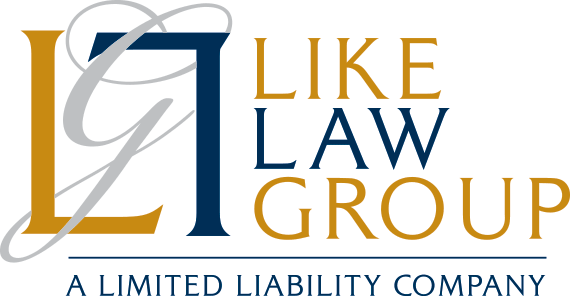Retirement Planning Update
Although we are still in the midst of winter, spring is on its way. As you remind clients about April deadlines for retirement contributions and required minimum distributions (RMDs) and meet with them to discuss their retirement planning, keep the following recent developments in mind.
IRS Proposed Regulations for Required Minimum Distributions
In 2020, the Setting Every Community Up for Retirement Enhancement (SECURE) Act created a ten-year payout rule for most inherited retirement assets, so that the account must be fully withdrawn by the end of the calendar year that includes the tenth anniversary of the date of the participant’s death. Although many initially believed that no RMDs were required in years one through nine following the death of the plan participant, in February 2022, the Internal Revenue Service (IRS) issued proposed regulations clarifying that RMDs are, in fact, required each year under many circumstances during the ten-year period. This caught many beneficiaries by surprise, especially those who opted not to take distributions in 2021 or 2022 in good faith based on the information they had.
However, on October 7, 2022, the IRS issued Notice 2022-53, which states that the IRS will not penalize beneficiaries for not taking those RMDs. However, beneficiaries will have to ask for a refund of any excise tax already paid; the IRS will not automatically reimburse it. This relief applies only for the 2021 and 2022 distribution calendar years. In contrast to the February 2022 proposed regulations, which stated that the final regulations would apply to 2022 and later distribution calendar years, Notice 2022-53 also indicated that any final regulations issued by the IRS regarding required minimum distributions under I.R.C. § 401(a)(9) will apply no earlier than the 2023 distribution calendar year.
The proposed regulations also clarify the age of majority under the SECURE Act: the child of an employee with an IRA is considered to have reached the age of majority on the child’s twenty-first birthday. However, defined benefit plans that have used a pre-Secure Act definition of majority may continue to use that definition.
Extension of Deadlines for Amending Retirement Plans
On August 3, 2022, the IRS issued Notice 2022-33, which provides plan administrators with extensions to amendment deadlines applicable to certain changes under the SECURE Act, the Bipartisan American Miners Act of 2019, and the Coronavirus Aid, Relief, and Economic Security (CARES) Act. In general, the following deadlines apply to make mandatory and discretionary amendments under the Acts:
- For nongovernmental qualified and 403(b) plans, the amendment deadline has been extended to December 31, 2025.
- For governmental qualified and 403(b) plans, the amendment deadline is ninety days after the close of the third regular legislative session that begins after December 31, 2023.
- For governmental 457(b) plans, the amendment deadline is the later of 90 days after the close of the third regular legislative session that begins after December 31, 2023, or the first day of the first plan year beginning more than 180 days after the date of the IRS notification that the plan was administered inconsistent with I.R.C. § 457(b).
Prior to Notice 2022-33, the deadlines for adopting the amendments were December 31, 2022, or December 31, 2024, for governmental plants and certain collectively bargained nongovernmental plans. The extension is especially important due to the extensive amendments to retirement plan provisions required by the SECURE Act, including (1) the increase in the age for required minimum distributions from age 70½ to age 72, (2) the expansion of coverage for long-term part-time workers, and (3) the elimination of lifetime stretch payments for most beneficiaries of inherited retirement accounts. The passage of the SECURE Act 2.0, which resulted in additional amendments, is likely one of reasons for the extension.
SECURE 2.0 Act
On December 29, 2022, President Biden signed the $1.7 trillion omnibus spending bill, which included the SECURE 2.0 Act of 2022. SECURE 2.0 requires employers with existing defined contribution plans to automatically enroll new employees in a retirement plan, with investments deducted from their paychecks, unless they affirmatively opt out of it. In addition, SECURE 2.0 increases the age for the required beginning date (RBD) for RMDs from retirement plans from 72 to 73 starting on January 1, 2023, for individuals who reach age 72 after December 31, 2022. The RBD will be increased to age 75 starting January 1, 2033, for individuals who reach age 74 after December 31, 2032. These changes provide an opportunity for you to help clients who will reach 72 in 2023 or later to update their retirement planning to maximize tax-deferred growth of their retirement accounts. The original SECURE Act, passed in late 2019, increased the age at which individuals must begin taking required minimum distributions from 70 ½ to 72 starting in 2020.
SECURE 2.0 also allows a surviving spouse to elect to be treated as the deceased employee for purposes of the RMD rules, effective for calendar years after December 31, 2023. As a result, you can alert surviving spouses whose deceased spouses were younger than them to consider making the election to delay the date at which RMDs must begin, allowing additional time for tax-deferred growth of their retirement accounts.
In addition, SECURE 2.0 increases the amount of tax-advantaged contributions older workers can make as they approach retirement age and expands opportunities for retirement savings for longer term part-time workers. You can enable your clients to maximize the growth of their retirement accounts by alerting them to these new opportunities.
The retirement planning landscape has been evolving over the past several years and we are committed to keeping you up to date on the latest developments and how they will impact your clients’ estate plans.


